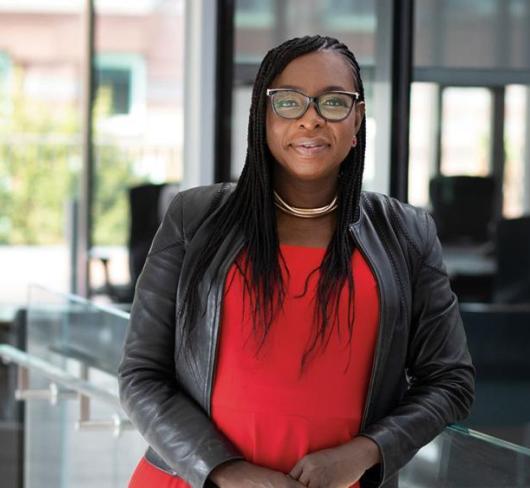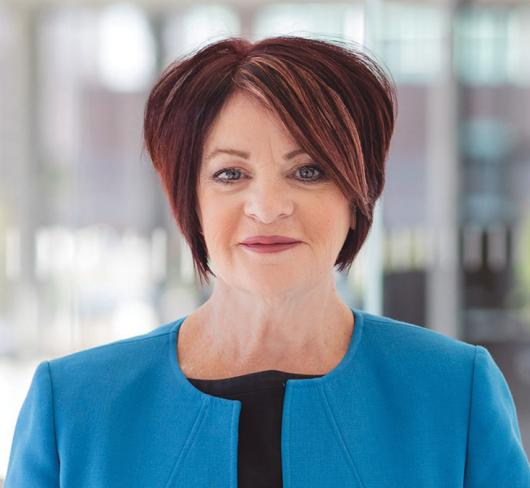Three Perspectives on the Meaning of Equity (Equity and Women's Services)
What do equity and inclusion mean to you? Considerthree perspectives
Sherry Ramrattan Smith
I walk into a room and I sense acceptance for who I am. I feel welcomed. There is no need to explainmy difference, whether seen or unseen. There is a space within that gathering for me, for my history,and my experiential knowledge. I feel an openness and willingness from the people to hear my voiceand listen to my story. My contribution is valued.
I wish I could say that has always been the case for me, but it is a vision I hold for my children and now my granddaughter. ETFO members read our organization’s definition of equity on a regular basis in pamphlets and reports. We listen to ETFO’s Human Rights Statement and are proud of the proactive principles and policies we hold. We are also presented with definitions of equity and inclusion from the Ministry of Education:
Equity: A condition or state of fair, inclusive, and respectful treatment of all people. Equity does not mean treating people the same without regard for individual differences.
Inclusive Education: Education that is based on the principles of acceptance and inclusion of all students. Students see themselves reflected in their curriculum, their physical surroundings, and the broader environment, in which diversity is honoured and all individuals are respected.1
Using an equity resource, enrolling in a workshop, attending courses, and compiling a series of degrees can only move us so far toward equity and inclusion. It is not surprising that we may become “stuck” at a point in our equity endeavours unless we are ready and willing to take on a mindset that questions our often hidden beliefs and values. Some beliefs and values we hold can prevent us from achieving the noble goals of equity and inclusion. Self-understanding plays a key role in how we begin to accept and respect those whose experiences are outside of our own. One strategy that has worked for me is to question the thinking behind the choices I make: Why do I believe this? What experiences led me to this particular belief? How and why is this person’s difference a threat to me? What do I have to lose or gain by shifting my perspective? Educational philosopher Nel Noddings states, “Probably no goal of education is more important – or more neglected – than self-understanding.”2 Perhaps by bringing a critical lens to our own thinking and actions, we may more readily advance toward a shared vision of equity and inclusion.
Alan Heatherington
The concept of equity serves to counteract the systemic, entrenched tendencies of a dominant group to impose and preserve a hierarchical power base. Equity acts to redefine the value of human activity by promoting the positive contributions of all who seek genuine improvement. Often these endeavours remain abstract, intangible, or dif- ficult to measure. Equity does not ignore nor attempt to obliterate differences; the inclusive nature of equity invites divergent thinking and celebrates the uniqueness of every human spirit. Leadership in an equity framework must develop gradually from a broad base. The road to equity provides individuals from under-represented, disadvantaged, and disenfranchised groups with opportunities to transcend the many barriers that persist. Equity facilitates growth and encourages the achievement of one’s full potential. Equity means recognition of the worth of the individual within a collective.
The measure of equity’s success is the level of commitment demonstrated by members of the dominant group to abandon traditional reactionary coping strategies and to work collaboratively with representatives of heretofore marginalized groups to adopt proactive, inclusive, and innovative approaches. Those who maintain a position of privilege will never willingly forfeit their status until they understand that a society based on inclusion will reap far more benefits than the present outcomes. Such a significant conceptual shift in defining human progress requires caring, courage, determination, and patience.
Jill Aoki-Barrett
As a parent, student and educator, my concept of equity and inclusive education has evolved from personal experiences and learning from the 1960s to present day. It has changed through the years as I met and worked with a variety of people and learned through or with them. Upon reflection, I recognize, sadly, how my experience of being a student and those of my sons have not changed as much as I hoped they would over the past 40 years.
I consistently question my power and challenge myself to release more and more of that power in order to share it and model with the community of learners I have the privilege of working with. To me, the misuse of power demonstrates a lack of respect for others – something I choose not to model. The concept of power affects how I view inclusion and equity. Inclusion is recognizing the identities of the students in school communities and our global community, whether the students recognize them or not. Be it learning styles, culture, race, sexual orientation, class, religion, ability, or gender – all identities must be recognized and reflected in our curriculum. It is my job to not settle for teaching the “status quo” but to recognize that all students deserve to see themselves reflected in the curriculum and to make that happen. Widening connections to those in our communities and globally is a way of being inclusive.
Of course, equity in the classroom does not mean everyone receives the same amount of something or is treated exactly the same. Quite the opposite – to me, equity means students get what they need in order to create a learning experience that meets their needs. Kids understand this concept when it is explained to them – it makes sense. We strive to respect individual needs by recognizing this. Equity and inclusion is ensuring that the dominant group does not continue to see themselves and their needs met at the expense of some whose needs and identities are often not recognized. I think the bottom line is that we need to respect all students and learn how to apply the principles of equity so that each one of us can feel included.
Notes
1. Ontario Ministry of Education (2009). Realizing the Promise of Diversity: Ontario’s Equity and Inclusive Education Strategy.Toronto: Ontario Ministry of Education, page 4.
2. Nel Noddings (2006). Critical Lessons: What Schools Should Teach. Cambridge: Cambridge University Press, page 10.

